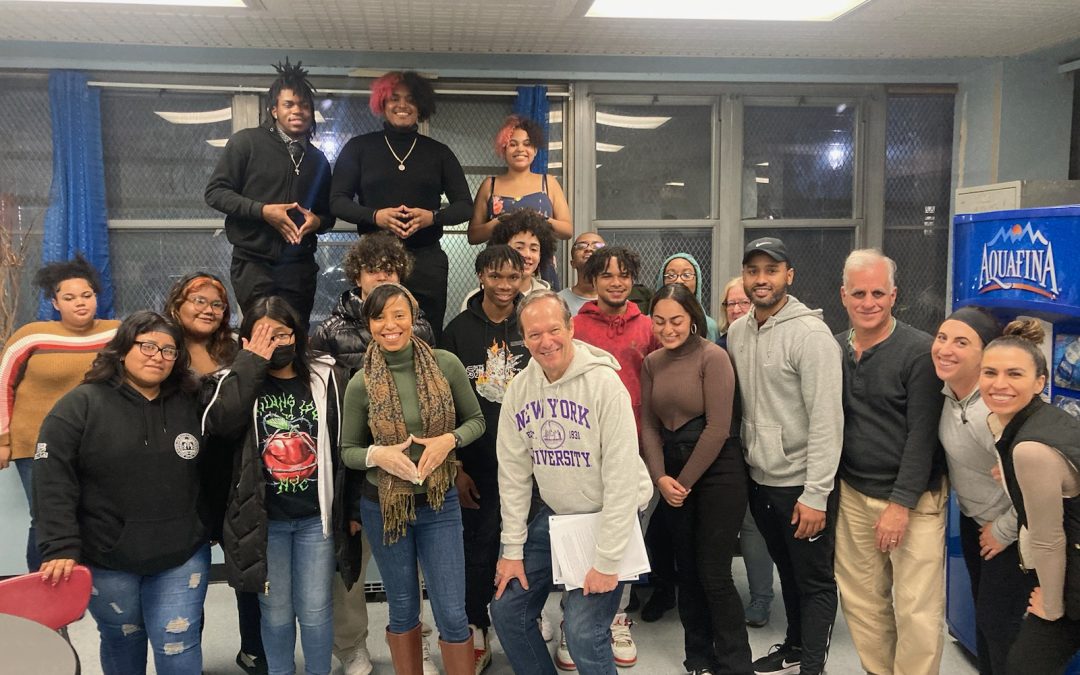A specter is haunting the American version of adultism. Adultism is characterized by the dominance of disabling language and municipal institutional governance which support habitual control over adolescents in lieu of including them in problem solving conversations. Historically, when teens have been invited to the table of civic participation, it has been enacted to support agendas and policies originated and implemented by adults ostensibly on behalf of the young.
In recent times, advocacy organizations founded and led by teens have taken a stand, demanding an equal place at decision-making tables. Leaders from March for Our Lives have organized to help push the agenda for sensible gun control, the Dreamers have kept the moral imperative alive for ensuring that the children of immigrants raised in the U.S. are kept safe here at home (their home and our home) and recognized for their contributions to our city and nation as invaluable citizens. Young environmental activists have prioritized governmental investment in green initiatives promoting new industries in energy, and green jobs. That keeps their options for the future obtainable and simultaneously keeps life on our planet sustainable. As spoken to by then Senator Robert F. Kennedy in 1968, it is time for our nation to discard outworn slogans and institutions supporting practices which are already dying, and to look to the counsel and leadership of the young.
The Reverend Martin Luther King, Jr. aptly identified what he labeled the 4 catastrophes as being problematic for the healthy future of our country. He called these social toxins materialism, militarism, racism, and poverty. In this blog, I am going to focus on materialism, and on how the essential assets of adolescents are guiding us closer to a future where environmental and socially just practice is becoming the pillars of our emergent society. Stephanie Katz (Hooked, 2005) aptly described the corrosive effects of hyper-consumerism on our psyches and communities. Driving adverse outcomes, “the drive to consume has displaced the psychic space once filled by religion, family, and community…Kalle Larsn, author of Culture Jam, speaks of ‘micro jolts of commercial pollution’ that flood our brains with about three thousand marketing messages per day.”
Tim Kasser, who is a member of the Campaign for a Commercial-free Childhood, has identified four negative outcomes that have been escalating over the past twenty-five years: excessive buying affects one’s sense of well-being, promoting a practice of materialism which increases anxiety, lowers self-esteem, and may lead to depression. Becoming habitually obsessed with materialist outcomes has also been linked to lower academic performance. ( source: www.voicesofyouth) Teens are now confronting the urge to splurge, with campaigns such as “ pre-loved clothes are the new cool” For teens, “it is becoming increasingly acceptable and highly encouraged. The second-hand clothing market is expected to surpass the luxury one for the first time in 2022.” ( www.voicesofyouth)
The old paradigm of adolescence identifies them as inherently prone to obsessive self-involvement and being isolated from involvement in community. Is this really a natural factor, or a social construction? Stephanie Katz aptly points to the latter: “Advertising deliberately promotes a climate of self-centeredness revolving around material desires, setting up stereotypes that foster greed, status, envy and hyperstimulation. At root, (advertising promotes) psychological dissatisfaction and inadequacy.” Perhaps as we obsess with teen tendencies to ask for too much, to seek status in lieu of states of well-being, and to have issues with impulse control, we should look to the adult created institutions which are reaping record profits by promoting self-sabotaging practices which have been condemned by spiritual laws for centuries.
Tina Rosenberg, in her book, Join the Club (Norton, 2011) shared the work of a teen-led initiative in Florida which successfully lowered rates of smoking after adult-led efforts had been showing no positive results. In a campaign called Rage Against the Haze,” thousands of students designed and approved truth-ads, exposing tobacco companies for promoting the peer-pressure to smoke and manipulation of feelings (self-worth, status, being an adult). The companies had misdirected attention from the root causes of why teens smoke, which were implemented as everyday advertising methods by tobacco companies.” After the teen activists began to shift youth perception, and young people began to identify the sources and private interests which led them to smoke, what resulted was a “22.6 %fall in teen smoking rates after a couple of years, and after a few more years, a fall to 14.5% of teens who smoked, effectively cutting the prior smoking rate in half.”
Today, we, as a society, are being blessed by the rise of adolescent-leader anecdotes and effective civic action. Teens are organizing, shoulder to shoulder with adult co-mentors, working, dreaming, and constructing a new pathway for social justice, ecological balance, and soul-centered guidance. Rather than falling prey to the discredited practices which misdirect and demean them, teens are reading the messages of their adolescent souls. As self-realized orphans, they are helping to heal the effects of abandonment, diminishment, and trauma. They are connecting their action to self-determined identity and life purpose. As empowered authors over their own destinies, teen rebels are discarding false narratives which discredit who they are and marginalize them. They are creating new narratives which empower and connect. As civic lovers, they are establishing a place for themselves and their civic teams at the decision-making tables of municipal governance. They are aligning with the higher angels of their nature, and the diamonds of deep democracy.


Recent Comments